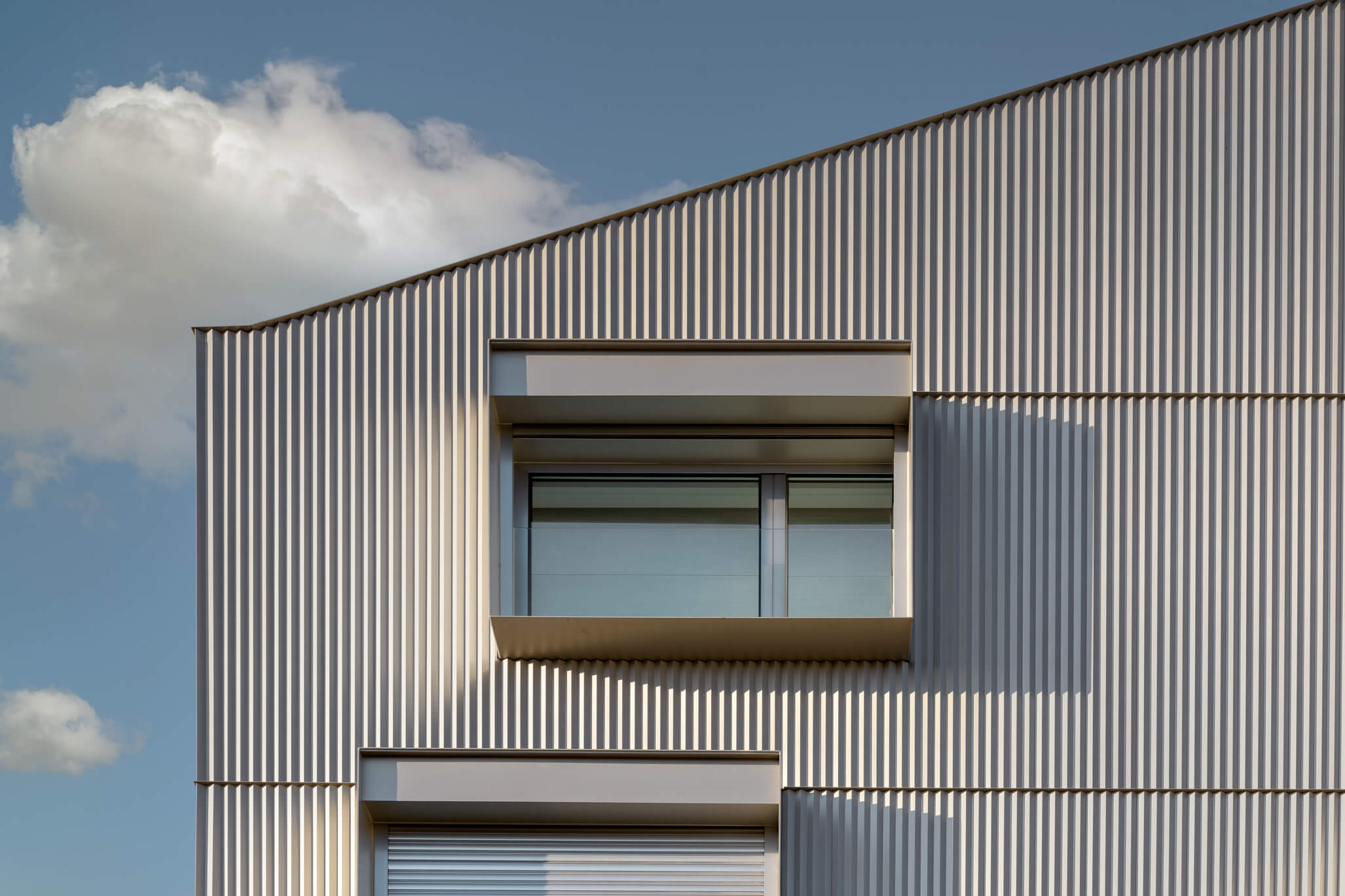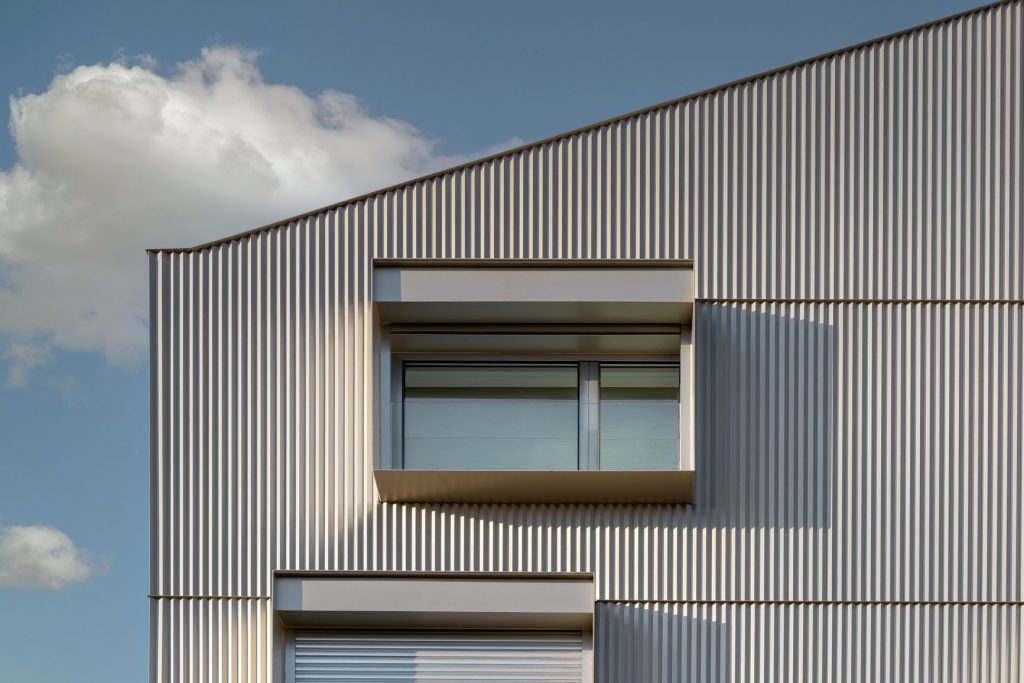Aluminium in architecture: Design flexibility, resilience and sustainability

- Aluminium has become an increasingly popular material in architecture thanks to a number of unique characteristics that enable the development of more efficient and sustainable projects, but without renouncing a high aesthetic value.
- Falkit by Alu-Stock is a system that, thanks to its simplicity of assembly, combination of slats, which enables a wide variety of designs and patterns, and adaptability, is ideal for use in architecture.
Traditionally, when choosing which materials would be the protagonists of their projects, architects were guided by two aspects: economics and aesthetics. One of the two was always the differentiating factor in determining their choice.
However, new consumer trends in society, which is increasingly concerned about the environmental impact of its activities, is shifting the burden of decision making to two new trends. On the one hand, people demand projects that are as environmentally friendly as possible. In other words, more sustainable.
On the other hand, architects prioritise efficiency and functionality above all other characteristics, which enables them to achieve much more competitive projects in an increasingly globalised and, therefore, difficult market. Effectiveness is generally also linked to greater efficiency, which will be presented as a distinctive value of the project to future users, who will see a reduction in future costs and a reduction in their carbon footprint.
Thus, architects and designers are opting for materials that are environmentally friendly, efficient and able to withstand the elements, and ongoing innovation in technology and design will continue to drive the choice of materials in architecture in the coming years.
Aluminium, the perfect sustainable and competitive material for today’s architecture
Aluminium is therefore becoming one of the most widely used materials in modern architecture. The fact is that characteristics such as design flexibility, slenderness, load-bearing capacity, sustainability, long service life and fire resistance make it the perfect answer for architects and builders in a society that is increasingly demanding more efficient and sustainable projects. All this without compromising on aesthetics.

Aluminium is known for its design flexibility. Due to its malleability, it can be moulded into a wide variety of shapes and sizes, enabling architects to create unique and customised designs. Aluminium is also lightweight yet strong, making it an excellent choice for high-rise structures.
Another advantage of aluminium is its strength-to-weight ratio. Aluminium is one of the strongest materials available in construction, and its strength-to-weight ratio makes it ideal for structures that need to support heavy loads without adding too much weight. This makes it a popular choice for tall buildings, bridges and other large structures.
Moreover, aluminium is one of the most sustainable materials available to the architectural industry. 100% recyclable, it is not only easy to carry out, but this process can be repeated infinitely without losing quality, something that is impossible for the vast majority of materials. Coupled with their long service life, which enables buildings constructed with aluminium to last longer and require much less maintenance, repairs and replacements in the long term, the environmental impact of construction is minimised.
Finally, one of the most underrated advantages of aluminium is its high fire resistance. Aluminium is a non-combustible material, which means that it does not burn or decompose in contact with fire. This makes it a safe and robust option for buildings that need to meet fire safety requirements.
Falkit system is ideal for use in architecture
Alu-Stock, a distributor of all types of aluminium products and semi-finished products for industry and architecture, is perhaps one of the companies that is working hardest to promote the use of aluminium in modern architecture.
It does this by developing products such as its high-quality aluminium system, Falkit. This system is ideal for use in architecture thanks to features such as its ability to be combined, enabling the creation of customised and unique designs. The slats can be combined in different sizes, colours and finishes to suit the specific needs of each project.
Falkit also stands out for its versatility, enabling a very wide range of applications in different types of buildings and uses. It can be used in both commercial and residential buildings, on façades, roofs and interior walls. Its use in interior spaces also offers a wide variety of decorative applications, such as room dividers and wall coverings.
Finally, Falkit has been developed to enable installation in different orientations, which allows for great flexibility in design. The slats can be installed vertically, horizontally, diagonally or curved, enabling a variety of patterns and designs.
Aluminium skirting boards for a solid base in modern architecture.
While Falkit is undoubtedly the spearhead of Alu-Stock’s solutions portfolio, the company also offers products that elevate the potential of aluminium in architecture.
Such is the case with its high quality aluminium skirting board, offering significant advantages over traditional wooden skirting boards. Their greater strength and longer service life will translate into both greater durability and slower ageing of their aesthetic virtues. Couple this with total water resistance and a higher capacity to withstand heavy loads, and the result is a much lower maintenance requirement than traditional solutions.
Moreover, Alu-Stock’s aluminium skirting also offers a wide variety of finishes and designs to suit any architectural and decorative style. From matt to glossy finishes and a wide variety of colours, Alu-Stock’s aluminium skirting board enables full customisation and perfect integration into any space. All in all, the Alu-Stock aluminium skirting board is the ideal choice for modern designers and architects looking for a durable and elegant alternative to the traditional wooden skirting board.
